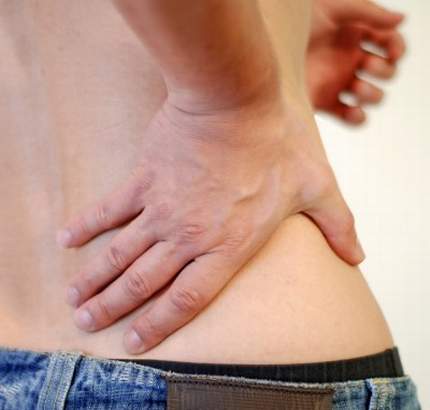What's in this article?
Pilonidal Cyst Overview
A pilonidal cyst occurs at the bottom of the tailbone (coccyx) and can become infected and filled with pus. Once infected, the technical term is pilonidal abscess. Pilonidal abscesses look like a large pimple at the bottom of the tailbone, just above the crack of the buttocks. It is more common in men than in women. It usually happens in young people up into the fourth decade of life.
Pilonidal Cyst facts
- Pilonidal cysts are fluid-filled sacs that form at the top of the crease of the buttocks above the sacrum. A painful abscess can form if the cyst and the overlying skin become infected.
- Pilonidal cysts are caused by groups of hairs and debris trapped in the pores of the skin in the upper cleft of the buttock, forming an abscess.
- Risk factors for pilonidal cysts include being male, sedentary, having thick body hair, family history, being overweight, and previous pilonidal cysts.
Symptoms of Pilonidal Cyst
When it’s infected, a pilonidal cyst becomes a swollen mass (abscess). Signs and symptoms of an infected pilonidal cyst include:
- Pain
- Reddening of the skin
- Drainage of pus or blood from an opening in the skin
- Foul smell from draining pus
- swelling,
- fever,
- if the abscess ruptures, there may be discharge of blood or pus.
- Treatment for pilonidal cysts involves incision and drainage (I&D) or surgery.
- Home remedies include sitz baths and some vitamin supplements.
- The prognosis for a pilonidal cyst is generally good. Recurrences are common.
Pilonidal Cyst Causes
Although there are several theories as to the causes and origins of pilonidal disease, most researchers today believe that pilonidal cysts are acquired (rather than congenital, or inborn) and that they are caused by the penetration of loose hairs into the skin through dilated hair follicles into the subcutaneous tissues. In response to this ingrown hair, a local inflammatory reaction causes a cystic structure to form around the hair and the other skin debris. Excessive pressure or repetitive trauma to the sacrococcygeal area are thought to predispose individuals to develop the cyst or to irritate an already existing pilonidal cyst.
During World War II, more than 80,000 U.S. soldiers developed pilonidal cysts requiring hospitalization. Because so many of the afflicted servicemen rode in bumpy Jeeps for prolonged periods of time, the condition was termed “Jeep disease.” It was during this time that many investigators produced articles on the treatment and management of pilonidal disease.
In addition to male gender, other risk factors for the development of pilonidal cysts include a family history of pilonidal cysts, occupations which require prolonged sitting, hirsute (hairy or having copious hair) individuals, and the presence of a deep natal cleft (the cleft between the buttocks). Obese individuals are more likely to experience a recurrence of pilonidal cysts.
Pilonidal Cyst Home Remedies
Early in an infection of a pilonidal cyst, the redness, swelling, and pain may be minimal. Sitting in a warm tub may decrease the pain and may decrease the chance that the cyst will develop to the point of requiring incision and drainage.
Pilonidal Cyst Treatment
Individuals who simply have a dimple or sinus tract that has not become infected or inflamed do not generally require any immediate treatment. However, an infected pilonidal cyst may become a pilonidal abscess (pus containing structure) that requires incision and drainage (lancing) in order to improve. This procedure can generally be performed in a physician’s office or in the emergency department.
- This is done by numbing the area with a local anesthetic and making an incision with a scalpel over the infected area to open the abscess cavity.
- The pus is drained, and any accumulated hair and debris are removed. The wound is cleaned with saline solution, packed with gauze, and covered with a bandage.
- Antibiotics are generally not necessary unless signs of a spreading skin infection (cellulitis) are present. Pain medication will often be prescribed.





